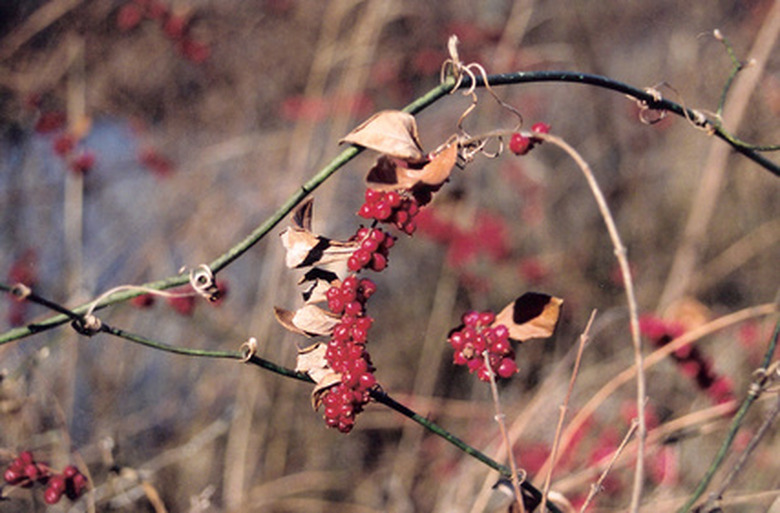Missouri Plant Identification
As a historical stepping-off place for westward exploration, Missouri has come relatively late to addressing issues of native biodiversity. Established in 1859, the Missouri Botanical Garden served as the repository for plants collected by Lewis and Clark. The Garden provides plant-identification resources and responses to individual questions. Other government efforts employ a partnership strategy that broadens the audience for Missouri plant identification. One partnership addresses fill-in strategies for Missouri's varied-crop and livestock farms. Another uses the Master Gardener program as a model for training naturalists for Missouri schools, nature centers and communities.
Botanical Garden Resources
The MIssouri Botanical Garden, located in St. Louis, can be contacted online and by visiting. Plant identification services include the Plant Finder program, on the Kemper Center for Home Gardening part of the MOB site. (Plant Finder is a national database and cannot be accessed by state). Kemper also maintains a Plants of Merit section, which contains recommendations of plants that do well in the lower Midwest, although the list includes non-natives. Underutilized native flowers included on the Merit list include Dutchman's pipe vine, aromatic aster, false indigo and poppy mallow. Native trees include the fringe tree and the yellow wood. Christmas fern and ninebark are among other native listings on the Merit site.
- As a historical stepping-off place for westward exploration, Missouri has come relatively late to addressing issues of native biodiversity.
- Kemper also maintains a Plants of Merit section, which contains recommendations of plants that do well in the lower Midwest, although the list includes non-natives.
Government Resources
The Department of Conservation also partners with Missouri State University Extension to conduct the Master Naturalist Program (similar to the Master Gardener Program), training individuals in stewardship of natural areas. Naturalists repay their training with a minimum of 40 hours of volunteer teaching, leading walks or other work in nature areas. Naturalists and others have access to the Conservation Department's field guide to native plants.
Other Resources
Given Missouri's extensive agricultural base, it is not surprising that the MIssouri brochure sponsored by Grow Native! is entitled "Native Plants for Your Farm." Grow Native!, a cooperative effort between the departments of Agriculture and Conservation provide material to home gardeners, landscapers and farmers, including links to department programs that actively encourage native-grass pastures, provide technical assistance for native plantings, and support specialized native crops (like hazelnuts). Grow Native! also supports native plant businesses and provides educational materials to schools and community organizations. It says something about Missouri's central location and diversity that the first 10 varieties in Grow Native's plant database "A" listings begin "American": blanketflower, beauty-berry, holly and smoke tree among them. The site includes a seedling identification section that is invaluable to new gardeners or outdoor explorers.
- The Department of Conservation also partners with Missouri State University Extension to conduct the Master Naturalist Program (similar to the Master Gardener Program), training individuals in stewardship of natural areas.
- a cooperative effort between the departments of Agriculture and Conservation provide material to home gardeners, landscapers and farmers, including links to department programs that actively encourage native-grass pastures, provide technical assistance for native plantings, and support specialized native crops (like hazelnuts).
Academic Resources
In addition to University of MIssouri Extension Services, Lincoln University Cooperative Extension has taken a leadership role in native plant advocacy and identification. The Native Plants Program at Lincoln involves the Missouri Prairie Foundation, the University of Missouri at Bradford, Master Naturalists, Master Gardeners and the U.S. Forest Service and is in the process of establishing educational native plant gardens statewide. One focus of Lincoln outreach will be to small farmers, especially minority farmers.
Other Information Sources
Both the Missouri Native Plant Society and the Missouri Prairie Foundation take an interest in restoring historic prairie land. It is no accident that nearly every photo on the Prairie Foundation site shows prairie land in bloom. The "Where We Work" part of the site makes clear the foundation's passion for protecting the prairie chicken but also lists between 200 and 350 plant varieties per piece of property managed. (The Prairie Foundation commissioned a Nature Conservancy ecological and floristic survey of foundation-administered prairie properties. The report is posted online, although the appendices with plant information property-by-property are not).
- In addition to University of MIssouri Extension Services, Lincoln University Cooperative Extension has taken a leadership role in native plant advocacy and identification.
- The Native Plants Program at Lincoln involves the Missouri Prairie Foundation, the University of Missouri at Bradford, Master Naturalists, Master Gardeners and the U.S. Forest Service and is in the process of establishing educational native plant gardens statewide.
Wildflowers and More
Photographer Dan Tenaglia has produced an online photo record of Missouri natives organized by flower color and other simple plant characteristics. The collection is based on a 1963 book about Missouri flora, which he notes is being updated by the Missouri Department of Conservation and reissued by the Missouri Botanical Garden Press.
Ozark Resources
The southwestern third of Missouri is covered by the Ozark Plateau of mountain highlands. Home to small farms and towns, the forested highlands contribute greatly to Missouri's biodiversity, partly because of areas that have remained untilled and even unexplored. The National Park Service notes rare discoveries along its Ozark National Scenic Waterways: three types of native orchids, a catchfly whose MIssouri population is restricted to the Ozarks and an Ozark wild crocus that grows nowhere else in the world. Recent news is of the discovery of apparently native-growing wild monkshood, never seen in Missouri, but so far from any known habitation that it can be presumed naturally growing.
